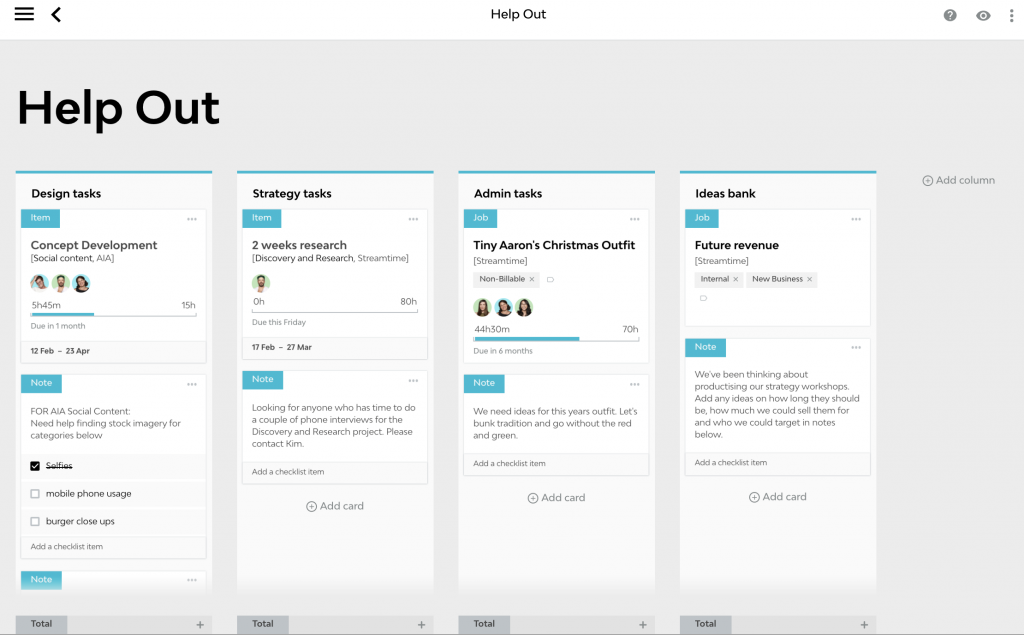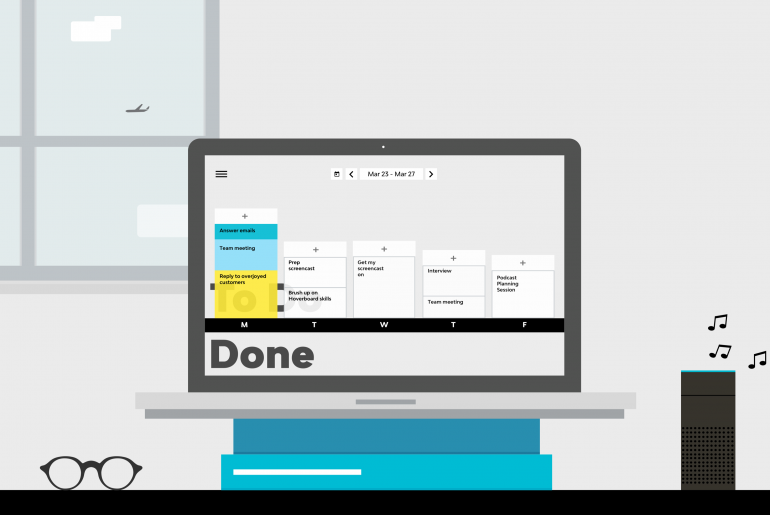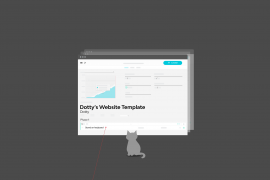Uncertainty certainly piles on the pressure.
Many of us are now working from home and have no idea about when we’ll make it back into the office and the safe familiarity of chatting with co-workers, sharing a joke, making a tea, dipping in on someone else’s conversation, someone asking if your internet is also slow, doing a crossword together over lunch, going for a run together, sticking hundreds of post-its up on the wall and having someone else to blame for running out of toilet paper.
The real life social connection that we take for granted has suddenly been stripped away and we’re left with… ourselves 😷. Of course you may have family, flat mates, neighbours around you, but it can suddenly feel like a distant second to your work family who are now nothing more than a bunch of pixels on a screen.
We’ve been embracing remote, flexible working for a long time. But it was all part of the plan. We planned to be flexible. “Everyone has a plan until they get punched in the face,” said Mike Tyson. Well, Co-vid 19, Coronavirus, is our collective punch in the face. Remote working might be great when we planned it. It’s a whole different ballgame when someone else has made that decision for us, and we’re forced to stay at home.
So what can we do to jump back up, beat the count, and say, “nah, that didn’t hurt, it was more of a tickle.” Many software companies may emerge as winners out of our current Corona circumstances. But. Software isn’t a substitute for people. It isn’t a substitute for trying to stay human. It isn’t a substitute for the connection we’d been getting with our colleagues face-to-face every day.
Here’s our guide to to turning your home into your work castle, where you’re worker royalty:
1. Connection is Queen / King
The biggest loss we’ve been experiencing is our daily connection ritual. At Streamtime you can almost set your watch by it. Simon’s probably in the office first and having a shower when I get in. Poli arrives and makes breakfast. Christian arrives with his container of fruit and muesli which he eats downstairs checking messages, before going upstairs and diving into Sketch. Mo, Pi and Paddy hit the coffee machine directly from the front door. Alan, starts his elaborate Weetbix making routine with milk, boiling water, sugar and a deep bowl.
Even as I write this, there’s a sense of the predictive routines that I’m going to be missing out on tomorrow morning.
If you’re part of a team and working remotely, you have to put recreating these connective moments even higher on the agenda.
Here are some suggestions you can try:
- Daily standups (WIP meetings over video – Zoom, Slack, Jamm, Microsoft Teams, Livestorm). You may have been doing these before. You may have specific teams working in this way. When you’re ALL remote, it’s a good idea to commit to this practice for EVERYONE. Why? It connects you to your team everyday. It gives you a sense of purpose, accountability and achievement.
What’s a standup? A good standup should be 5 mins max per person. Each person shares what they achieved yesterday, what they’re going to achieve today, and any blockers that are making it difficult to achieve these commitments. - Re-create social rituals. Ever since Sarah joined Streamtime, our Sydney team does a crossword together nearly every lunchtime. It didn’t stop us this week as we jumped on Jamm, read out clues, posted pictures as it was being filled out and completed it in about 20 minutes.
- Have some fun. Today we launched a game for our team called, “Who lives in a house like this?” Each team member shared a photo of their laptop in a different part of their house. I posted the pics to Slack and we had to guess whose house it was.
- Video wherever possible. Visual connection is always going to be more rewarding than the directness and margin for ‘tonal error’ in an email or Slack message.
- Record your work. If you can’t get your team together at the same time then record a quick video summary and share it so they can check it out when they have time.
2. Pumped up process
No matter how loose or how rigid your processes are, when you’re all working remotely, routine and schedule is essential.
Right now, we need to be adaptable. What worked before, might not be best for how you work now. Consider breaking your process into daily meetings where you can review and plan out day-sized chunks of work that are easy to share progress and give updates on.
If you do adapt your processes be sure to communicate the changes clearly to your team. Templates or diagrams to refer to can help ensure that nothing can be misunderstood.
3. Pinpoint progress
In the day-to-day office it’s easy to shout across a desk, grab someone on their way to make a coffee and get a progress update on something that you asked them to do. You can still do this virtually of course, but you can’t do it with a smile and some friendly body language. Instead, your colleague is going to get a notification. No-one like’s notifications. They’re like “Clippy 2”, coming back to haunt us in the sequel to the Microsoft Office Movie, “It looks like you’re writing a letter”.
With so much unseen and unsaid, it’s important to be super clear on progress. Project progress, task progress, and budget progress. In Streamtime, you can use Priorities (Kanban) boards for just this. Set one up that shows 20%, 40%, 60% etc. right up to 100+% for anything that’s going over. Keep them updated each day and write notes next to your job cards so everyone knows what’s happening.
On a call this week with a customer, we devised a new board which is great for more autonomous remote work. It’s called a Help Out board. If a team member has finished a task, or has some downtime waiting for client feedback or a brief to come in, they can check out the Help Out board.

Here, Producers, Account Managers, anyone really, can add a job, or task, accompanied by a note card with some instructions on the help they need. Searching for stock photography, offering to help out with some phone interviews, coming up with ideas on how to look for revenue in uncertain times(!) could all be added to the board. It’s a great way to collaborate and take some of the pressure off each other. Ordering the columns by discipline is an easy way for people to see where their skills are needed.
And of course, be clear on progress with your clients. Let them know that you’ve reached 60% and they’re going to receive their third invoice for the project. Financial uncertainty needs payment certainty for anything you’re still actively working on. That might mean adding a few progress invoices into your agreement so that you can manage cashflow better.
4. Check yourself and look out for others
Working home out of choice is very different to working from home as a mandate. Having the flexibility to work in your own surroundings, to focus and keep away from distractions is great. The opposite is being trapped in your home, staring at your screen, getting heaps done, but never taking a break.
I’ve been amazed by how much I’ve been able to get done this week. But I also now feel like I’ve been trapped and have no idea how or when I’m going to get out. There’s no doubt I’m more productive (I know that might not be everyone, just one more check inside the fridge?) but the intensity is getting me down. Don’t tell anyone, but last night I drove into the office between 7 and 11 just for some peace and quiet and a change of surroundings.
Checking in with yourself is paramount. Here are a few things you can try:
- Take a look at what you’ve achieved this week. In Streamtime, you can go back through the Done level on your ToDo screen. Look back at files you’ve shared, emails you’ve sent off. Take the time to see how much you’ve done, you’ll be pleasantly surprised.
- Going for a walk has been one of the major updates on our Slack channel this week. Everyone is feeling it. Getting out and clearing your head is as important at home as it is in the office. Why’s this important? Turns out I have the answer in this podcast with Professor David Alais from Sydney University – you’re welcome.
- Take a look at yourself. I’ll be honest. The last 2 days I started getting pretty grumpy. Staring at the same screen in the same house, even though I tried different rooms, wasn’t cutting it. I felt like I’d been working 24/7 non-stop. It was relentless. While I had been getting through a lot of writing, spreadsheets and calls I was getting exhausted. Sleeping where you work, also doesn’t help! Find some boundaries. Agree some start and stop times with yourself. And, importantly if you get sick, stop working. Just because you’re at home and isolated, doesn’t mean you need to keep working. Take sick days like you normally would. You need to look after yourself. And let’s face it… who’s going to argue with sick leave right now?
- Look out for your workmates, especially the quiet ones. It’s easy to disappear inside yourself at times like this. If you’re feeling it, you can bet that your friends and colleagues are too. You’ll be amazed at the power of a “Hey, how’s it going over there?” message on Slack or email. In a radical new use of technology, you could also give them a call. This all helps in maintaining connection at a time when we’re being told that “self-isolation” is a “good thing”. At Streamtime, we setup a #headsup channel as part of our mental health policy. It’s the perfect place to share how you’re feeling, and it hasn’t been used more than in the last week. Helping people to be honest with how they’re feeling and see that others are feeling the same or have also been there can be very comforting.
- If you’re a leader, out of sight, out of mind doesn’t want to be your catchphrase right now. If you’re leading a team or business, you need to be very much in sight and in mind for your team.
5. Make decisions
Just because it feels like the world is on hold, and let’s face it, the politicians are struggling to make decisions quickly, it doesn’t mean you have to as well. In fact, the good thing about working remotely is that you have less distractions.
What we all need at times like this is clarity, and direction. Don’t hide away because you can. Make decisions and push forward.
Make a record of all the decisions being made and make sure it’s easy to access for everyone. You could create a Slack channel for this, or again, in Streamtime, use Notes cards on a Priorities board.
6. Casa to Castle
Work is for work, is the mantra of many creatives and many families. “Taking your tie off at the door” is a good rule for changing modes once you get home. But, what happens if you never leave? Finding a way to turn a part of home into your office is a nice way to set some boundaries, and be able to turn up to and walk away from work.
Treat yourself. Re-create your desk (or the desk you wished you had) at work, so that it feels like it’s for work-you. Some of our team members have signs on the door so they don’t get disturbed when on a call.
I’m still looking for my desk. I don’t have one at work, so I’m looking forward to creating my space at home!
Make sure your internet is up to scratch, and if it isn’t, see if work will help you out with a better plan or connection. It’s in their best interests of course! If you can, take a screen home, or improvise with your Apple TV or Chrome Cast. And get yourself a notebook. There’s nothing like a notebook and pencil on your desk to make it feel like your own.
If you’re using a personal computer at home, spend some time customising your desktop, getting your work favourites into Chrome or Safari and setting something new for your wallpaper. If you’re used to music, get the bluetooth speaker out and make some playlists to make it feel as much like the office as possible.
(Of course, if your office sucks, then what a great opportunity to just make your own mini-office exactly how you’d like it!)
7. Don’t just take our word for it
Finally, you won’t be surprised to know that we’re not the only one’s to have published a guide for how to cope with remote working right now.
Check out some of our favourite’s below:
Made Brave – Ten top tips for working remotely
Mentally Friendly – A guide to making remote teamwork productive
Trello – How to embrace remote work
ustwo – Remote working guide
If you’re struggling to cope with the current circumstances or you know someone else who is, be sure to reach out for help.
There are great resources for our industry on Mentally-Healthy.org including a list of helplines. If you’re in the UK get in touch with our friends, NABS.
If you fancy a chat about any of the above, feel free to drop me a line as well. You can find me on Linkedin or Twitter or just on email at my first name @streamtime.net.
Good luck!! Stay strong, stay safe. We’ll get through this.








3 Comments
Pingback: Turning working from home into working from your castle - Design Assembly — Design Assembly
Pingback: a tip for remote freelancers and creative workers in home office.
Great piece of advise that you’re providing us all here in these trying times. And we totally agree with you that routine is important to anyone working from home and without it everything will start falling apart. Thanks for helping us all and reminding us what’s important for us all in-order to cope with these times.
Nice Work keep it up.